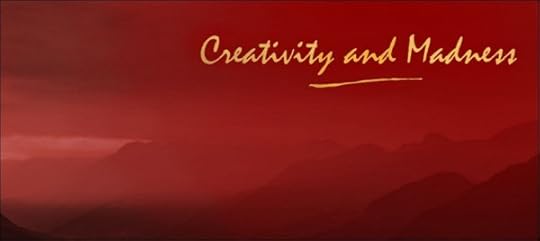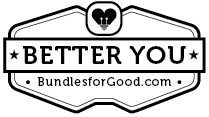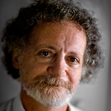David J. Bookbinder's Blog, page 6
September 6, 2017
Miracles
There are two ways to live: You can live as if nothing is a miracle; you can live as if everything is a miracle.
– Albert Einstein
I am a miracle worker by trade. Or more precisely, a facilitator of miracles.
I state this with humility. My powers are as ordinary as those of the Wizard of Oz, whose only real magic was tricking Dorothy, the Tin Woodsman, the Scarecrow, and the Cowardly Lion into beginning a journey out of their self-limiting beliefs.
The best trick I’ve found to facilitate miracles is deceptively simple. (Like the Wizard, I, too, sometimes need to be a little deceptive). It’s called the Miracle Question and it goes like this:
Imagine that after you finish this essay you do whatever you would normally do with the rest of today. But tonight, while you’re asleep, a strange thing happens: A miracle occurs. This miracle is just for you, and it’s that all your problems and concerns are solved. Wonderful, right? However, there’s a catch. Because the miracle happened while you were asleep, when you wake up tomorrow, you’re in the world of the miracle from here on out, but you don’t know it. So the question is: What do you notice, from the moment you wake up and as you step through your day, that eventually gets you thinking, “Something’s different about today. A miracle must have happened!”
You are looking for a shift in awareness like Dorothy’s after the tornado deposited her in Oz. She steps out of her house, looks around, and, as the film itself shifts into Technicolor, she sees the yellow brick road, the horse of many colors, the munchkins. She turns to her little dog and exclaims, “Toto, I’ve a feeling we’re not in Kansas anymore!” You are looking for what leads you to your I’m-not-in-Kansas-anymore moment.
The Miracle Question is part of Solution-Focused therapy, which is based on the belief that all of us have the means to solve our own problems. The question helps people to envision, while in a guided visualization, what their lives can be when all their current concerns have been addressed and issues resolved.
After I ask clients the Miracle Question, I lead them through answering it, using prompts like: How do you feel when you open your eyes? Are you in the same bedroom? The same house? With the same people? What’s different as you get ready for the day? What’s different as you step through it, hour by hour? What do other people in your life notice about you that’s different? What do you notice about them?
Gradually, as they walk through their miracle day, a detailed vision of that different life emerges. Then it’s just a matter of working toward the miracle, one doable step at a time.
After clients have answered the Miracle Question, they reflect on what pieces of the miracle are already part of their lives, in whole or in part. Then I ask them to evaluate their present life on a scale of 1–10, where “1” is how things were when they were as far away from the miracle as they have ever been, and “10” is they are living the miracle 24/7. The number they come up with is where their journey begins.
Before they leave the session, clients decide on a task or experiment that they hope will move them closer to their miracle. The choice is important. Generally, it shouldn’t be something they would do anyway, nor should it be so daunting that they won’t attempt it. Instead, the best experiment is something they really want to do, even if there is some anxiety, and they believe that regardless of the outcome, just doing it will raise their score. At our next meeting, we look at what happened and make course corrections as needed. Then we repeat the process until, step by step, week by week, they create their miracle.
It is difficult to get somewhere if you don’t know your destination and have no way to check that you’re on the right path. Answering the Miracle Question helps us envision the desired destination, the experiments move us forward, and the 1–10 scaling provides a means for verifying that we’re still on track.
The Miracle Question is like the Call to Adventure that launches the Hero’s Journey. It impels us to take risks and endure struggles we might not otherwise have taken and endured, but which yield rewards that cannot be obtained any other way. Much as Dorothy discovered she always had a home, the Tin Woodsman found his compassion, the Scarecrow displayed his brilliance, and the Lion showed his courage, by traversing our own yellow brick roads, we become who we are meant to be.
Perhaps today is when you begin a journey down your yellow brick road. What will you notice when you wake up tomorrow?
P.S. If you find what you read here helpful, please forward it to others who might, too. Or click one of the buttons below.
Books:
Paths to Wholeness: Fifty-Two Flower Mandalas
52 (more) Flower Mandalas: An Adult Coloring Book for Inspiration and Stress Relief
52 Flower Mandalas: An Adult Coloring Book for Inspiration and Stress Relief
Paths to Wholeness: Selections (free eBook)
Copyright 2017, David J. Bookbinder
http://www.transformationspress.org
http://www.davidbookbinder.com
http://www.flowermandalas.org
August 30, 2017
Got Anxiety? How to Help

NOTE: This article first appeared on lifehack.org, where I am now a columnist.
In Part I of this two-part series, we looked at what anxiety is and how to tell if you or someone close to you is suffering from an anxiety disorder.
Now let’s explore the causes of anxiety disorders and the treatments for them. We’ll also delve into the best self-help strategies anxiety sufferers can practice themselves and how their friends and families can help.
Types of people who are prone to anxiety disorders
The causes of anxiety disorders are not completely understood, but most people I’ve worked with seem to have one or more of the following: a more sensitive temperament, to have suffered events that felt traumatic to them early in life, and to have endured a period of stressful situations. The combination of these factors brought them to a tipping point that created an anxiety disorder. Specific risk factors for anxiety disorders include:
Childhood trauma, such as abuse, neglect, or witnessing a traumatic event.
Stress build-up due to a single, very stressful event or a sequence of smaller stressful situations.
Having close relatives with an anxiety disorder.
Chronic physical illness.
Substance abuse.
Borderline Personality Disorder and Histrionic Personality Disorder.
The most common misconceptions about anxiety
Common misconceptions about anxiety disorders include:
Anxiety is not a “real” illness and people who have anxiety just need to get over it.
Anxiety is part of who a person is and can’t change.
Anxiety disorders can’t be cured, you just have to live with them.
An anxiety disorder is a brain disorder.
There are quick-fix remedies for anxiety disorders.
None of these is true. Anxiety is a real illness, it is caused by multiple factors, and although there are no “quick fixes,” it can be cured by a combination of therapy, self-help strategies, supports, and life-affirming activities.
When to consider medication
When I work with people who have anxiety, I suggest medication only after we have tried other methods.
Most people can resolve an anxiety disorder by developing a “package” that includes developing a different attitude toward their lives, doing specific practices and activities that relax and stabilize, removing unnecessary stresses, and understanding the underlying issues that caused their anxiety disorder.
When the anxiety is so great that a client can’t make the needed changes, medication can often be a helpful supplement to therapy and self-care. Occasionally, medication is necessary in an ongoing way, but I haven’t found that often to be so.
The one exception is Obsessive-Compulsive Disorder (OCD). People who have OCD often respond very well to the Prozac family of antidepressants, usually administered in larger doses than given for depression.
Medications that help with anxiety come in two varieties: antidepressants and anxiolytics.
Some antidepressants help with both depression and anxiety, particularly the antidepressants in the Prozac family, known as selective serotonin reuptake inhibitors (SSRIs). Sometimes people remain on antidepressants for a long time, but often they can stop after they have learned other ways to handle anxiety and depression.
Anxiolytics work on the specific parts of the brain that are associated with anxiety. These include medications such as Xanax, Ativan, Klonopin, and Valium. They are fast-acting, but they don’t address underlying causes. Although they are sometimes prescribed as long-term treatments, in my experience they are best used on a short-term, as-needed basis. They tend to lose effectiveness when they are taken regularly, and they are physically addicting. For many people, stopping an anxiolytic they have become physically dependent on is harder than quitting smoking.
The right approach to tackle anxiety
The most important thing people with an anxiety disorder can do is to learn as much as they can about their problem and how to treat it. People who take charge of their illnesses, whether physical or psychological, always do better than people who are more passive.
The next most important thing to do is to find a therapist who understands anxiety disorders, has had success working with them, and who seems to “get” you. All therapists are not created equal.
Interview your prospective therapist on the phone about how he or she might help with your anxiety, and ask how many clients he or she has successfully treated. If someone is helping you, keep seeing that person. If, after a few sessions, you don’t feel significantly helped, discuss it with the therapist. If, after the discussion, you continue not to feel helped, this therapist is probably not right for you. Ask for a referral, and also consult therapist directories such as Goodtherapy.org and the Find-a-Therapist service sponsored by Psychology Today.
A good self-help book on anxiety disorders is an extremely useful supplement to therapy. The best I’ve found, and one I often recommend to clients, is The Anxiety & Phobias Workbook by Edmund Bourne. It’s a virtual encyclopedia of knowledge, self-tests, and strategies for dealing with anxiety.
Along with therapy, some of the most effective activities I’ve found helpful for reducing anxiety and becoming more resilient include:
Learning to treat yourself with the same compassion you would show to others you love.
Developing a healthy lifestyle, including proper nutrition, exercise, and good sleep habits.
Building nurturing relationships with friends, families, and other social supports.
Regularly practicing centering, self-soothing techniques such as meditation, yoga, and walks in nature.
Developing a creative activity that you can look forward to doing even when you feel anxious.
Noticing what helps – and doing more of it!
What not to do when having anxiety
The list of things NOT to do is pretty short:
Don’t use alcohol and drugs, since they can make anxiety worse.
Quit smoking, as nicotine can also worsen anxiety.
Cut down on your consumption of foods and beverages that contain caffeine, such as coffee, tea, cola, energy drinks, and chocolate. Caffeine can increase anxiety symptoms.
Don’t overcommit to activities that increase your anxiety. Pushing too hard doesn’t speed up recovery.
But don’t always give in to anxiety, either. Gently challenging anxiety is helpful.
The best things friends and family can do to help
These are some of the things friends and family can do to help people who have anxiety disorders.
Learn about anxiety disorders
Knowledge is power. The most helpful thing friends and family can do is to help the person with anxiety feel seen, heard, and understood. You can’t help someone if you don’t understand what they are going through.
Ask how to help
Everyone is different, and everyone needs different kinds of support. People with anxiety can tell you what helps and what doesn’t.
Be reassuring
Remind anxiety sufferers not to be too hard on themselves, and reassure them that the disorder is not their fault. Praise accomplishments and progress. Let them know you care.
Be a companion
People with anxiety are often reluctant to start new things. Offer to go to a yoga class, take a walk or bike ride, or do some other kind of relaxing physical activity together.
Encourage treatment
No matter how compassionate and how smart you are, someone with an anxiety disorder probably also needs professional help. Offer to help them find a therapist. See if they would like a ride to a therapy session.
Get help yourself
Being supportive of someone with an anxiety disorder can sometimes be taxing, so make sure you have someone to talk to, too.
The worst things friends and family can do
These are some of the things people with anxiety disorders have described as unhelpful:
Acting like nothing is wrong or minimizing the problem
Minimizing the problem, in an attempt to make someone feel better, often has the reverse effect.
Telling them that if they stop dwelling on their issues they’ll go away
Part of the problem is that they can’t simply stop dwelling on their issues. Don’t ask them to do what seems impossible.
Telling them to “get their act together.”
If people with anxiety could just “get their act together,” they would have done so already.
Blaming their problems on bad life decisions
Anxiety is not the result of bad life decisions.
Giving unsolicited advice
Like almost everyone else, people with anxiety welcome advice when it’s asked for, but not when it’s unsolicited.
Pressuring them to go out and do things
People with anxiety have to go at their own pace. Encouragement is fine. Pressure is counterproductive.
Getting frustrated
It’s difficult to remain patient when someone seems to keep suffering in ways that you, the non-anxious person, would find easy to change. If you feel frustrated, imagine how you’d respond to someone with a physical problem and you’ll probably regain your patience.
Enabling
Although pushing is rarely helpful, enabling anxiety by never challenging the “rules” the anxious person has set up is not helpful either. Finding the right balance between encouraging and accepting current limitations is an ongoing experiment, both for the anxious person and for the people who are trying to help.
Treatments I’ve found most effective
The generally recommended treatment for anxiety disorders is Cognitive Behavioral Therapy(CBT). Cognitive Behavior Therapy is a structured form of therapy that focuses mainly on identifying and correcting mistaken beliefs and on teaching skills to modify dysfunctional thinking and behavior.
In my experience, CBT is a useful framework around which to structure therapy for anxiety disorders, but it is not usually sufficient. I adapt the treatment to the individual, and to where the individual is in his or her recovery. Although treatments are different for different people and vary throughout the course of recovery, the basic components include:
Forming a trusting client/therapist relationship.
Helping the person build additional supports that help him or her to thrive.
Identifying contributing factors in the person’s history, environment, and their ways of processing perceptions, thoughts, and feelings
Identifying contributing factors that can be changed, and developing strategies for changing them.
Identifying contributing factors that cannot be changed, and developing strategies for accepting them.
Teaching skills necessary for functioning in a more satisfying way.
Teaching methods for monitoring and maintaining progress.
To give you an idea of how varied treatment for anxiety disorders can be, here are a few snapshots of clients who have successfully dealt with their disorders.
With a client who had social anxiety, we focused mainly on helping her remove stressors, including a too-demanding job and a dysfunctional romantic relationship. Then we worked on developing the ability to enjoy small talk and other social lubricants and on understanding how some of her patterns in social situations were shaped by her family of origin but didn’t apply to her current life.
With a client who had a phobia about germs as well as OCD symptoms, what helped most was asking the client to research the germ situations he was afraid of and really test them. I also asked him to vary his counting and checking routines to help him see that they were not always necessary. For example, instead of always locking a door three times, he would sometimes do it seven times, sometimes two, and so on. Eventually, he stopped counting entirely.
A client whose untreated OCD made it impossible to leave a room without a complex set of time-consuming rituals was unable to make progress with therapy until she started on a relatively large dose of Prozac, after which the OCD symptoms quickly subsided. When she tried getting off the Prozac, the rituals returned. Staying on Prozac was the best solution for her.
I helped a client who had Generalized Anxiety Disorder and I found that her anxiety was not really related to the things she worried about. Instead, it was an ever-present free-floating anxiety that “landed” on various circumstances in her life. Using a technique from Gestalt therapy, she learned to befriend her anxious part and to pay direct, compassionate attention to it rather than trying to suppress or correct it.
Where to go from here?
Over the years, I’ve worked with many people who have fully recovered from anxiety disorders and now live much richer, fuller, and far less worried lives. Where there’s a will there’s a way. With the right kind of professional help, the right supports, and, most importantly, the right person at the helm – you! – I’m confident you’ll find your way, too.
P.S. If you find what you read here helpful, please forward it to others who might, too. Or click one of the buttons below.
Books:
Paths to Wholeness: Fifty-Two Flower Mandalas
52 (more) Flower Mandalas: An Adult Coloring Book for Inspiration and Stress Relief
52 Flower Mandalas: An Adult Coloring Book for Inspiration and Stress Relief
Paths to Wholeness: Selections (free eBook)
Copyright 2017, David J. Bookbinder
http://www.transformationspress.org
http://www.davidbookbinder.com
http://www.flowermandalas.org
August 23, 2017
The Two Faces of “Anxious”

NOTE: This post first appeared on lifehack.org, where I am now a columnist.
“Anxious” is a word with two faces. Sometimes it means eager excitement. “I’m anxious to see you!” we say, as we get off the phone with a friend who’s coming to visit. The other side of “anxious” is a bit darker: “I’m anxious about that test,” we say, when we’re worried about the results. We call the second meaning “anxiety,” and most of us experience it from time to time.
In common usage, both meanings of “anxious” describe our responses to fleeting, time-limited events. But anxiety can also have a much more powerful grip on many of us. Without the right kind of attention, it can rule our lives.
I’m a psychotherapist in private practice north of Boston, Massachusetts, and I’ve worked with many clients who have anxiety. In this, the first of two articles on a psychotherapist’s views on anxiety, I’ll describe what anxiety is and how you can tell whether you or someone close to you is suffering from it. In Part II, I’ll go into its causes and treatments, as well as the best ways to help heal from anxiety disorders.
Anxiety is more common than people think
More people in the United States have anxiety disorders than any other mental illness. Anxiety affects more than 40 million adult Americans and about one in eight children. Some experts put the estimate much higher, because many people don’t know they have anxiety, are diagnosed incorrectly, or don’t seek help for it.
In my psychotherapy practice, nearly all my clients have some form of anxiety. Sometimes it’s the main reason they came to therapy, and sometimes it’s an underlying issue that shows up after we’ve handled the immediate reason they came for help.
Only about one-third of people who have anxiety disorders seek treatment.
Many anxious people know they have anxiety, but many more do not. They think catastrophizing, expecting the worst, worrying about what people think of them, or staying up late at night worrying about just about everything is normal.
It feels normal because that’s what they’ve been used to most of their lives – but it doesn’t have to be. Most people with an anxiety disorder can overcome it with treatment, support, and self-help strategies.
The difference between feeling worried and having anxiety
An anxiety disorder is different from feeling worried or being afraid. Worries about new or uncertain situations are normal, and feeling afraid in potentially dangerous situations is not only normal, but can sometimes save your life. Worrying about how you will perform on an exam might motivate you to study harder. Worrying about an erratic driver in front of you might help you drive more defensively. Feeling fearful about driving on a winding road in a storm might get you to wait for safer weather conditions.
Also, not everybody who worries a lot has an anxiety disorder. You might feel anxious because of too much work, too much stress, too little sleep, too much coffee, or low blood sugar.
The biggest distinction between normal worry or fear and anxiety disorders is that anxiety disorders involve some form of chronic anxiety, and the anxiety interferes with normal functioning.
7 specific anxiety disorders
There are several kinds of anxiety disorders, and they each look and feel different from one another. One person might have intense panic, another might avoid social situations, another might be unreasonably frightened by dogs, and someone else might worry about nearly everything.
All anxiety disorders share a persistent fear or worry in situations where most people would not be afraid. Specific anxiety disorders have other, specific symptoms.
1. Social Phobia
People with social phobias are afraid of embarrassment or judgement in social situations and may blush, feel tongue-tied, go blank, have rapid heart rate, or show other signs of anxiety in those situations. They will avoid social situations whenever possible.
2. Special Phobias
People with special phobias might be unreasonably afraid of animals such as dogs or spiders, natural events like storms or lightning, heights, open spaces, enclosed spaces, and other parts of the normal world. They may go to extremes to avoid these things.
3. Generalized Anxiety Disorder
Symptoms of Generalized Anxiety Disorder (GAD) can include feeling nervous most of the time, a sense of impending doom, feeling helpless, rapid breathing, increased heart rate, sweating, trembling, a queasy feeling, and tension in the neck, shoulders, or both.
4. Acute Stress Disorder and Post-Traumatic Stress Disorder (PTSD)
Both of these anxiety disorders sometimes occur after people have witnessed or experienced a physical threat. Symptoms include disturbing memories, flashbacks of the event, trouble sleeping or concentrating, and feeling either tense or numb. Acute Stress Disorder symptoms begin within a month of the traumatic event, while PTSD symptoms typically begin later. Symptoms can last for many years without treatment.
5. Panic Disorder
People with panic disorder have unexpected, severe anxiety attacks during which they are afraid they might die, pass out, or that they are suffocating. They often avoid places where panic attacks occur, which can lead to agoraphobia.
6. Hypochondria
People with hypochondria (now called Illness Anxiety Disorder) worry about having illnesses they probably don’t have. They catastrophize minor or imagined symptoms into a worst-case scenario. For example, they may be convinced that a headache means they have a fatal brain tumor.
7. Obsessive-Compulsive Disorder (OCD)
Sufferers may check obsessively, count when counting is unnecessary, and in general do ritualized behaviors. They feel unbearably anxious if they do not perform these rituals.
The most common anxiety disorders, in approximately this order, are: Social Phobia, Specific Phobias, Generalized Anxiety Disorder, Acute and Post-Traumatic Stress Disorders, Panic Disorder, Hypochondria, and Obsessive-Compulsive Disorder
In my practice, I most often encounter Generalized Anxiety Disorder and PTSD, though I have also had many clients with Panic Disorder, Hypochondria, Social Anxiety Disorder, and Obsessive-Compulsive Disorder. Sometimes, people come in with more than one anxiety disorder. Hypochondria and Generalized Anxiety Disorder, for example, often show up in the same person, as do Social Anxiety Disorder and perfectionism which, though not an “official” anxiety disorder, contributes greatly to most forms of anxiety.
Signs of anxiety disorders
If you identify with any of the following symptoms, you might be dealing with an anxiety disorder.
You’re almost always worried or on edge.
You have irrational fears that you just can’t shake.
You’re often afraid that bad things will happen if you don’t do things in a particular way.
You avoid everyday situations or activities because they make you anxious.
You have sudden, unpredictable attacks of heart-pounding panic.
You almost always expect the worst.
You have trouble getting to sleep or staying asleep.
Your muscles almost always feel tense.
You often feel overwhelmed.
You expect more from yourself than most people do
You tend to focus on your health and personal problems more than other things in your life.
Your anxiety interferes with work, school, or family life.
You have one or more of the following physical symptoms: pounding heart, sweating when you’re not exercising or in a warm place, headaches, frequent upset stomach or diarrhea, dizziness, shortness of breath, shaking or trembling.
Some anxiety disorders are harder to spot
In my experience with psychotherapy clients, PTSD is usually the most difficult to spot because its symptoms don’t always cleanly match the standard definition. PTSD can look like depression, several other forms of anxiety disorder, ADHD, or a combination of mental illnesses.
An example: I once worked with a client who seemed to cycle through several anxiety disorders within a few months. She first displayed typical signs of panic disorder, and we quickly worked through them. But then OCD symptoms appeared. Again, we worked through them in what seemed like record time. Irrational fears and intrusive, disturbing thoughts soon followed.
It was a few months before we understood that what she was actually suffering from was the aftermath of childhood trauma. She had what I now think of as free-floating anxiety – a form of anxiety that unconsciously attaches itself to other anxiety syndromes. A clue to understanding how to help her was that she had majored in psychology and knew about various mental illnesses. Her half-remembered knowledge of common anxiety disorders gave her free-floating anxiety a place to focus. Working through the trauma helped her resolve all her anxiety symptoms.
Stay tuned!
In this article, we’ve looked at how worrying and fear are different from anxiety disorders and have identified the main symptoms of common anxiety disorders. In Part II of this two-part series, we’ll go into the causes of anxiety disorders, their treatments, and some self-help practices people with anxiety disorders and their loved ones can do.
P.S. If you find what you read here helpful, please forward it to others who might, too. Or click one of the buttons below.
Books:
Paths to Wholeness: Fifty-Two Flower Mandalas
52 (more) Flower Mandalas: An Adult Coloring Book for Inspiration and Stress Relief
52 Flower Mandalas: An Adult Coloring Book for Inspiration and Stress Relief
Paths to Wholeness: Selections (free eBook)
Copyright 2017, David J. Bookbinder
http://www.transformationspress.org
http://www.davidbookbinder.com
http://www.flowermandalas.org
August 16, 2017
My love affair with Georgia O’Keeffe
For many years, people have pointed out that my Flower Mandalas must have been influenced by the flower paintings of Georgia O’Keeffe – which, of course, was not lost on me. But it was not until I traveled to Santa Fe and then north to Abiquiu and nearby Ghost Ranch that I understood how deep that influence was.
I feel more at home and at peace (and at the same time, as the Brits say, gobsmacked) in this painted landscape than anywhere I’ve been on the planet, and I can see why O’Keeffe kept coming back, year after year, until she was finally able to put down a permanent stake there.
Here are a few more of the images I shot on a too-brief journey up Route 84 into Georgia O’Keeffe country after attending the Creativity and Madness conference in Santa Fe.




More anon,
David
P.S. If you find what you read here helpful, please forward it to others who might, too. Or click one of the buttons below.
Books:
Paths to Wholeness: Fifty-Two Flower Mandalas
52 (more) Flower Mandalas: An Adult Coloring Book for Inspiration and Stress Relief
52 Flower Mandalas: An Adult Coloring Book for Inspiration and Stress Relief
Paths to Wholeness: Selections (free eBook)
Copyright 2017, David J. Bookbinder
http://www.transformationspress.org
http://www.davidbookbinder.com
http://www.flowermandalas.org
August 9, 2017
How Art Makes You Stronger: Creativity and Madness

I’ve just returned from an incredible week at the Creativity and Madness conference in Santa Fe, New Mexico, and I wanted to share a little about the conference itself and what I presented there.
The conference is the creation of psychiatrist Dr. Barry Panter and Mary Lou Panter and is currently run by Dr. Panter and his wife, Jacqueline Berz Panter. Barry began it 35 years ago as a way for health and mental health professionals to receive and to present ideas on how artistic creativity and mental health are connected. This conference and the companion conference Women of Resilience happen twice a year in the U.S. and twice a year in other parts of the world.

The conference has been held in Santa Fe, San Francisco, New York, Boston, Washington, Hawaii, all of the major cities in Europe, as well as in South America, Australia, Hong Kong, Singapore, Bangkok, Bali, and China. MDs, PhDs, Social Workers, MFTs, and other therapists and medical professionals can obtain continuing education hours by attending Creativity and Madness.
You can find out more about it here: http://creativityandmadness.com
I’ve given presentations and workshops there five times. This year, my focus was on the psychological benefits of creative projects.
I’ve been engaged with both long-term and short-term creative projects most of my adult life, but I didn’t think much about their psychological benefits until I had a near-death experience while a PhD student in English in the early 1990s. I struggled with the meaning of the NDE and was prompted by a professor to write about it.
By creating a narrator, a story I was telling, and an imagined audience, I was able to examine the experience – which was both shattering and transformative – differently than I did in my day-to-day coping, in therapy, or in a support group I belonged to that focused on healing from trauma.
The psychological changes I experienced and the reintegration that took place while I was writing felt connected with the healing process I was undergoing in therapy. Sometimes the two intersected and sometimes they ran in parallel, but inevitably they intersected again in important ways. The image of the double helix seemed to best describe that relationship.

One of the most profound outcomes of this double-helix exploration of the near-death experience and its aftermath was that I abandoned my English PhD and returned to grad school to become a psychotherapist. (It was during my therapist training program that I first heard about the Creativity & Madness conference.)
People often make deep and long-lasting life changes when they work on creative projects. For my presentation in Santa Fe, I interviewed several artists about these changes, and I wanted to share some of their observations with you.
Meditative. “There’s a meditative aspect to having a practice, in my case painting. It allows me to be in the moment. It’s complex, but in a way that energizes. If I’m painting, I’m sane. If I’m not painting, I’m insane.”
Touchstone. “I like the touchstone effect. It’s something to go back to, to keep involved with the creative process. Without that, it’s too easy to get involved with the demands and responsibilities of my day job and how exhausting that can be.”
Nourishing. “I find a long-term project a source of nourishment I can go back to and reinvigorate myself. To see that portion of the journey and think, “Oh, wow, that’s great! I really did that? That came out really well.” Or to go back to another part and think, “I really struggled with that.” There are parts of this story I’ve worked on for well over a year, and I’ve taken leaps and leaps and leaps. And I’ve come back to it and I say, I didn’t really have a clue how I was going to do that, and it worked out well, and now it fits in here. I get nourishment from what I’ve completed, not only to complete what I’m doing, but also to push me to the next one. So, I find the journey is important, I agree, but I find going back to it keeps on giving back.”
Calming. I don’t know if this would be called self-hypnosis or not, but for me, writing fiction has a great calming effect. I forget time and hunger and fatigue and enter another, rejuvenating world.
Evolving. “A longer-term project is a process of becoming. The artwork evolves, but you evolve, too.”
Spiritual. “When you start a long-term project, there’s a lot of planning, and the goal is far away. It can be a spiritual journey, going from point A to point B. Just whipping something out in a day doesn’t have the same feeling.”
Transformative. “I think that the nature of making art – good art – requires going deeply within and getting in touch with your deepest feelings. This can be difficult – you might revisit past trauma or unpleasant situations. But it can also connect you with exalting joy and even bring on an extreme or altered state of consciousness.”
Sustaining. “With a long-term project, you create a companion within your own space that sustains you. If you have a project you’re working on, you’re not alone and you don’t feel lonely. I think there’s great solace in that. It’s a very deep relationship – like the relationship some people have with God.”
For more on the benefits of creative projects, you can download a PDF of the slides from my presentation here: http://www.davidbookbinder.com/conference/2017/MandalasHealingColoring.pdf
I’m interested in your own experiences with art and transformation and hope to hear from you in the comments of this post.
More anon,
David
P.S. If you find what you read here helpful, please forward it to others who might, too. Or click one of the buttons below.
Books:
Paths to Wholeness: Fifty-Two Flower Mandalas
52 (more) Flower Mandalas: An Adult Coloring Book for Inspiration and Stress Relief
52 Flower Mandalas: An Adult Coloring Book for Inspiration and Stress Relief
Paths to Wholeness: Selections (free eBook)
Copyright 2017, David J. Bookbinder
http://www.transformationspress.org
http://www.davidbookbinder.com
http://www.flowermandalas.org
August 2, 2017
Be the Change
A man cannot step into the same river twice.
– Heraclitis of Ephesus
I came of age in the late ’60s, the era of the first man on the moon, the Vietnam War, Woodstock, free love, civil rights marches, and the assassinations of iconic figures including Robert Kennedy, Martin Luther King, and Malcolm X. It was a time of reinventing the mores, values, and attitudes of the Depression-era parents who raised us. Bob Dylan’s “The Times They Are a-Changin’” was our anthem – and our hope. We believed we could “change the world”: end war and poverty, achieve racial equality, bring literacy to the illiterate, and recreate the Paradise from which we felt we had fallen long ago. We could do it. My generation. Us, not them.
I finished high school in 1969 and that year discovered the poetry of William Blake, Allen Ginsberg, and Robert Bly. These poet radicals became my role models. Much of my first year in college I spent attending concerts by topical protest singers, encircling draft boards, demonstrating on college campuses and in Washington, D.C. But by the time the war ended, I knew I wasn’t cut out for the life of a political radical, not even a poet radical. I was still motivated to “change the world” – but how?
I became a seeker and a drifter. I briefly lived on a farm owned by an environmental design professor from the University at Buffalo who wanted to build affordable houses from indigenous materials, a project that ended when he died suddenly from a brain hemorrhage. I took a two-month motorcycle trip around the northeast and landed, eventually, in Manhattan. Still hunting for a way to “change the world,” I found work there as a reporter for weekly newspapers and as a part-time art teacher at the Brooklyn Museum. For five years, I wandered New York’s streets and subways, my camera, tape recorder, and notepad at the ready. I developed a writing/photography style I thought of as “slow journalism,” modeled on the work of Walker Evans and James Agee’s Let Us Now Praise Famous Men and Studs Terkel’s Working.
I moved from documentary to fiction writing and returned to grad school, first in creative writing and later in English. During a lengthy recovery from a brush with death, my search for a way to “change the world” shifted again, toward more intimate and individual connection, and I eventually found psychotherapy. A close friend ends every email to me saying he hopes I’m still “saving the world one client at a time.”
I have felt purposeful in all these things. Yet I have also mourned the loss of the vision my generation had of a different world – until, that is, a recent vacation in Germany, where I spent a few days in the former East Berlin. In my last hour there, as I looked for somewhere to have lunch, a young man with a goatee and long blonde hair grabbed my shoulder and said, “Did you go to Woodstock?”
“Me?”
“Yeah, you.”
“Well, as a matter of fact I did.”
Triumphantly turning to companions seated nearby, he exclaimed, “See! I told you!”
Another young man, darker complexioned, hair in a topknot and holding a beer in one hand, said, “Can I give you a hug?”
I paused, suspicious of pickpockets, then nodded. “Sure, why not?”
They were a foursome: The one who had asked me about Woodstock was Swedish, the hugger was Italian, and a young couple was from L.A. Like the majority of the people I had seen in East Berlin, they were all in their mid-20s. The young woman asked me what my most lasting impression was from Woodstock. “When I arrived at the festival and saw half a million people like me, I felt that we could change everything,” I said. “But things didn’t really go that way, in the end. After a generational blip, they’ve more or less gone back to how they were.”
She shook her head. “But you did make a difference!” she said. She gestured around the table. “We’re all continuing what you started. You’re like our Founding Fathers!”
For half an hour, we talked about how my generation had influenced theirs. For the Italian, inherited change was simply to be able to drink beer on the street and dress however he wanted; for the Swede, to make and listen to whatever music he liked; for the two Americans, to do creative design and to congregate in East Berlin where, with others like themselves, they might forge their own Woodstock Nation.
That brief encounter has stayed with me. Maybe our attempt to “change the world” didn’t die with the ’60s after all. Maybe it is alive, in its own form, in the generation that succeeded us. Maybe what we planted still grows and we shall all, one day, reap its harvest.
NOTE: Writers live for feedback! Please leave comments on my blog, rather than emailing me: Be the Change
P.S. If you find what you read here helpful, please forward it to others who might, too. Or click one of the buttons below.
From Paths to Wholeness: Fifty-Two Flower Mandalas
Print: Amazon – BookBaby – B&N – Books-a-Million
eBook: Kindle – Nook – iTunes – Kobo
Also available:
52 (more) Flower Mandalas: An Adult Coloring Book for Inspiration and Stress Relief
52 Flower Mandalas: An Adult Coloring Book for Inspiration and Stress Relief
Paths to Wholeness: Selections (free eBook)
Copyright 2017, David J. Bookbinder
http://www.transformationspress.org
http://www.davidbookbinder.com
http://www.flowermandalas.org
July 26, 2017
5 Topics: A very short manifesto
“There are not more than five musical notes, yet the combinations of these five give rise to more melodies than can ever be heard.”
– Sun Tzu, The Art of War
An editor at lifehack.org recently asked me what topics I would choose if I could write about only 5. The question brought meaning and purpose into sharper focus.
These are the topics I chose: Acceptance, Gratitude, Perseverance, Self-Love, and Hope.
And this is why:
Without full acceptance of present circumstances, positive change is difficult or impossible.
Without gratitude to help us remember the positives, it is easy to get caught up in the negatives and lose momentum.
Without perseverance, it’s easy to give in to despair at the first setback, mistaking, as T. S. Elliot put it, a single defeat for a final defeat.
Without self-love, it is difficult to care enough about ourselves to persevere in the face of obstacles we encounter along the journey to self-actualization.
Without hope, it’s impossible to start, and starting is perhaps the most necessary thing of all.
I believe strongly in the power of people to become their fullest selves, and in their birthright to do so. I am strongly opposed to repression, manipulation, and the subtle handicapping that often occurs when what is truly great in people is not seen, understood, and encouraged. Helping others to feel seen, understood, and encouraged is the main intent of my work as a therapist and writer, and also as a human being.
What topics would you choose, if you could only choose 5? Why?
Let us know in the comments area of this post.
More anon,
David
Copyright 2017, David J. Bookbinder
http://www.transformationspress.org
http://www.davidbookbinder.com
http://www.flowermandalas.org
July 24, 2017
Can you help with a little experiment?
I have a small, personal favor to ask of you.
So far, my attempts to get my work out into the world have had limited success, and because I have what seems to be a helpful message. I’m looking for ways to find a larger audience.
I’m actually excited to be part of the Better You Bundle for Good coming in a few days. It’s a large and varied assortment of books, personal development courses, and other resources. And for me, it’s an experiment.
So, here’s the favor: Please download the free ebook Change Your Life! Experts Share Their Top Tips and Strategies for Reaching Your Highest Potential This book contains nearly 100 personal development tips from a diverse group of authors and course creators, including some of my own best advice. It’s a really interesting mix of “being-oriented” and “action-oriented” tips, and a portent of what’s to come in the Better You Bundles for Good package itself. Here’s the link: Download the free ebook
Downloading the book will sign you up for the Bundles for Good email list, but you can easily unsubscribe if you don’t want to hear more about it. There are no gimmicks, nothing you will be obligated to buy. But you will be helping me with this experiment, and if you buy the bundle later on, you’ll also be supporting not only me and the other authors, but Courageous Kitchen, which helps refugees in Bangkok, Thailand. As little as $100 per month can get a family off the streets there, and 25% of the proceeds from the sale are going to support Courageous kitchen.
The sale runs from July 27th to July 30th, and once it’s over, it’s over. I’ll send an email again when the sale opens. Keep an eye on your inbox!
So, please enjoy Change Your Life! and stay tuned for more information about Better You Bundles for Good. Here’s the link for the ebook again: Download the free ebook
Thanks. I truly appreciate your help with this. I’m a big proponent of encouraging experiments and I am grateful in advance for your participation in this one.
David
P.S. If you find what you read here helpful, please forward it to others who might, too. Or click the social share and email buttons on this page.
Paths to Wholeness: Fifty-Two Flower Mandalas
Print: Amazon – BookBaby – B&N – Books-a-Million
eBook: Kindle – Nook – iTunes – Kobo
Also available:
52 (more) Flower Mandalas: An Adult Coloring Book for Inspiration and Stress Relief
52 Flower Mandalas: An Adult Coloring Book for Inspiration and Stress Relief
Paths to Wholeness: Selections (free eBook)
Follow me on:
Bloglovin’
StumbleUpon
Medium
Copyright 2017, David J. Bookbinder
http://www.transformationspress.org
http://www.davidbookbinder.com
http://www.flowermandalas.org
P.S. If you find what you read here helpful, please forward it to others who might, too. Or click the social share and email buttons on this page.
July 19, 2017
Makeovers! (and a question)
Just a quick note to get your thoughts on three things:
The recent makeover of this blog, which I hope is a massive improvement over the quick-and-dirty format I’ve been using until now. What do you think? I’d like to get a discussion going, so please leave comments on the blog, in the Comments area at the bottom of this post, rather than emailing them to me.
The recent makeover of my BookBaby Bookshop page. Truth to tell, that’s where I’d prefer people buy Paths to Wholeness, as I actually make a profit there. It’s at: Paths to Wholeness BookShop Page What do you think? I have very little ability to directly customize it, but I can pass your responses and suggestions on to BookBaby. Again, please leave comments on the blog, in the Comments area at the bottom of this post, rather than emailing me directly.
How can I best encourage those of you who take the time to respond to my posts to leave comments on the blog instead of emailing me directly? I really appreciate the emails, as it’s sometimes hard to write in a vacuum, but it would be great to encourage some discussion around these topics, too, and that can only happen when people see the responses of other people.
And finally: You can now subscribe to the blog directly! And so can your friends and family, if you like what you see and think they will, too. (Okay, I know that’s 4 things, really.)
Last but not least, in the spirit of the Department of Redundancy Department, Please leave comments on the blog, in the Comments area at the bottom of this post, rather than emailing them to me!
That’s it for now. A thousand thanks!
David
Paths to Wholeness: Fifty-Two Flower Mandalas
Print: Amazon – BookBaby – B&N – Books-a-Million
eBook: Kindle – Nook – iTunes – Kobo
Also available:
52 (more) Flower Mandalas: An Adult Coloring Book for Inspiration and Stress Relief
52 Flower Mandalas: An Adult Coloring Book for Inspiration and Stress Relief
Paths to Wholeness: Selections (free eBook)
Follow me on:
Bloglovin’
StumbleUpon
Medium
Copyright 2017, David J. Bookbinder
http://www.transformationspress.org
http://www.davidbookbinder.com
http://www.flowermandalas.org
P.S. If you find what you read here helpful, please forward it to others who might, too. Or click the social share and email buttons on this page.
July 17, 2017
Change Your Life! (and help refugees in Thailand)
INTRODUCING A FREE EBOOK:
Change Your Life!
Experts Share Their Top Tips and Strategies for Reaching Your Highest Potential
This free ebook contains personal development tips from nearly 100 authors and course creators, including some of my own best advice.
Change Your Life! is a part of the Better You Bundles for Good promotion happening at the end of July. The free ebook includes a wide range of inner-oriented “being” tips and action-oriented “doing” tips. It’s a really interesting mix and I think you’ll enjoy it. It’s also a portent of what’s to come in the Better You Bundles for Good package itself.
Click here to download the book: Download the free ebook
Better You Bundles for Good will include the full-length courses and ebooks, worth thousands of dollars, for one low price, among them my own Paths to Wholeness: Fifty-Two Flower Mandalas. If you are serious about becoming your best self, you won’t want to miss seeing what this package offers. The Better You Bundle sale will last only 4 days, so make sure you check your email to be notified of the sale dates.
The best part is that 25% of the proceeds from the Better You Bundles for Good sale are going to support Courageous Kitchen, a charity helping refugees in Bangkok, Thailand. As little as $100 per month can get a family off the streets there, so we can make a big impact with this promotion.
Here’s the Change Your Life! ebook link again: Download the free ebook
Enjoy Change Your Life! and stay tuned for more information about Better You Bundles for Good.
Thanks,
– David
P.S. If you find what you read here helpful, please forward it to others who might, too. Or click the social share and email buttons on this page.
Paths to Wholeness: Fifty-Two Flower Mandalas
Print: Amazon – BookBaby – B&N – Books-a-Million
eBook: Kindle – Nook – iTunes – Kobo
Also available:
52 (more) Flower Mandalas: An Adult Coloring Book for Inspiration and Stress Relief
52 Flower Mandalas: An Adult Coloring Book for Inspiration and Stress Relief
Paths to Wholeness: Selections (free eBook)
Follow me on:
Bloglovin’
StumbleUpon
Medium
Copyright 2017, David J. Bookbinder
http://www.transformationspress.org
http://www.davidbookbinder.com
http://www.flowermandalas.org
P.S. If you find what you read here helpful, please forward it to others who might, too. Or click the social share and email buttons on this page.












